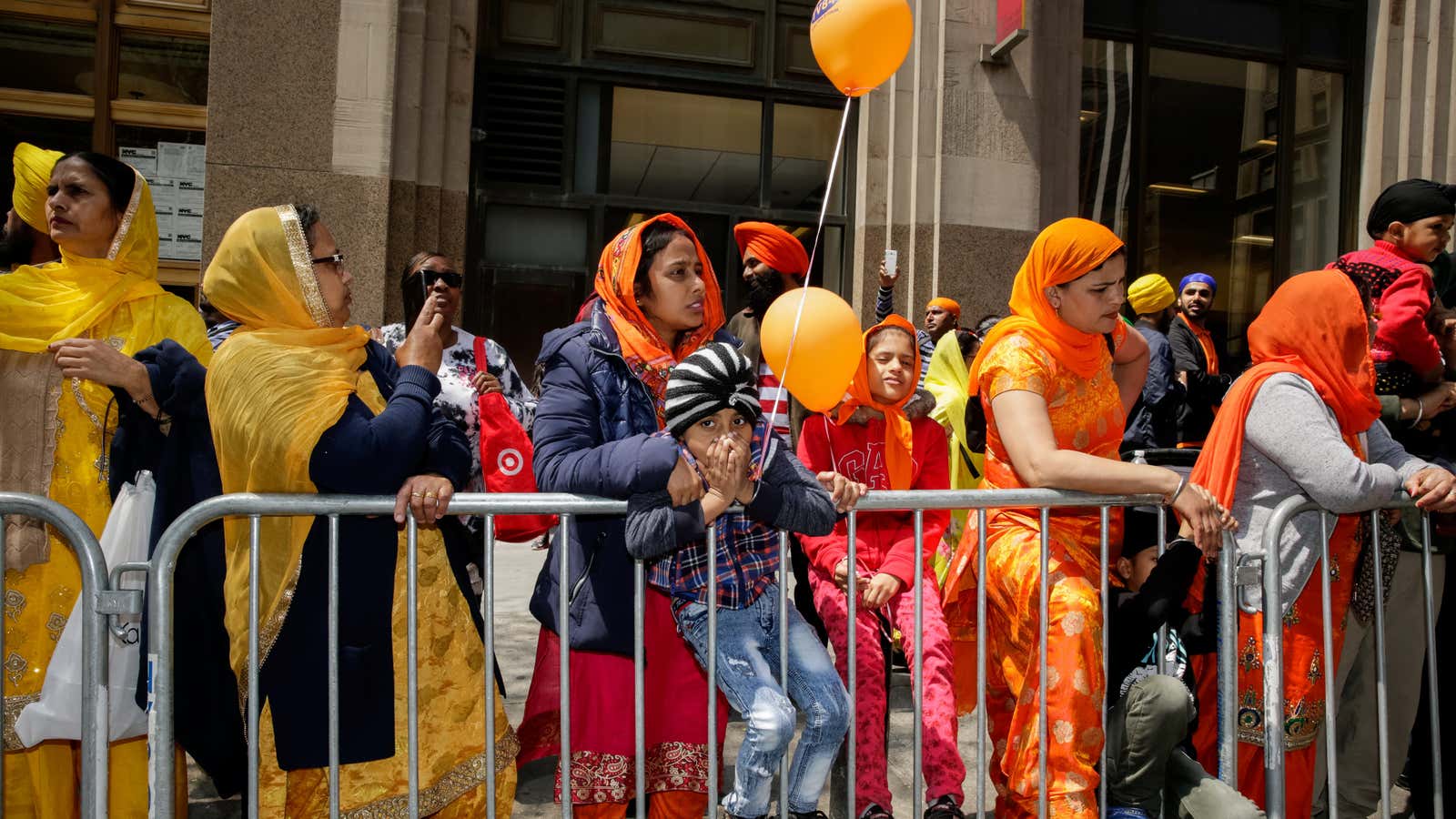The current US government has earned an anti-immigrant reputation thanks to president Donald Trump’s protectionist rhetoric and the administration’s steps to curb visa misuses.
But ask the Indians who migrated to the US in the early 20th century and they will tell you how the present hostility is nothing compared to what they faced back in the day.
In his book, The Most Dangerous Place: A History of the United States in South Asia, Srinath Raghavan talks about the first few waves of Indian immigrants in the US who were relegated to second-class citizens.
Back in the early 1900s, many Indians moved west after retiring from the British colonial police in China and the Far East. Some others were hired by the Western Pacific Railroad to build railway lines in the Pacific Northwest and they moved on to work in lumber, construction, and agriculture. A few years on, students—largely Hindu men and some Sikhs and Muslims—began enrolling at Stanford University, University of California, Berkeley, and other institutes.
Today, though, most of the migrant movement is driven by high-skilled talent, which has created a standing for itself in American society.
Below are edited excerpts from Quartz’s conversation with Raghavan about America then and now:
How is the Indian immigrant of today different from the one of the early 1900s?
Before the first World War, the US was an important arena for Indian immigrants and their idea of India’s relationship with the British empire and nationalism broadly. The earlier base was Indians who came to the US as part of a larger cohort of Asian migration to the US. Much of it was on the west coast with the gold rush and the development of California.
Today’s immigrants, predominantly due to the nature of immigration structures, are high-skilled like the H-1B workers.
Is the US still as hostile towards Indian immigrants as it was before?
As a historian, you’re always stuck by parallel but I’m also acutely aware that history changes over time and the world today is very different from the world before. I don’t think it is anywhere close to as hostile as what it was back then.
Earlier, there was nativist backlash against foreigners coming in and taking away jobs. It was driven by ideas of race. In the book, I write about riots against Indian workers and Chinese workers by the whites. Now, the attempt is to try and make sure provisions of work visas are not misused by companies. The US wants to ensure there are more Indian companies creating jobs in the US, and they have. Infosys last year had pledged to create 10,000 jobs for Americans in America.
You still see it (racial stereotyping) with Latin Americans and those from central America, but at the discourse level, it doesn’t seem to be true of Indian Americans.
Why are Indians no longer as strongly discriminated against?
The first wave of Indian immigrants was manual workers. The immediately succeeding lot were primarily students, political activists, like Lala Lajpat Rai, and others being persecuted by the UK taking shelter in the US. The next wave, after 1965, was when Indians really started moving there more for opportunity and upward economic and social mobility. And that’s still the reason.
One thing that is different today than the first half of the 1900s is the presence of a large, well-to-do Indian-American community, many of whom are born in the US and have proven themselves in the context of that society. There’s a book about Indians in America called The Other One Percent and the reason they call the book that is because Indian Americans are in the top percentile of all accomplishments, whether it’s income, education, etc. in American society. It’s the most well-to-do, most affluent immigrant group in the US today. That’s a totally different context, say, than from Latin American immigration.
We still see multiple instances of hate crime though. Is that not anti-Indian?
Sikhs have been targeted after 9/11. That kind of stereotyping and chauvinism exists. Some years ago, there was a furore over (Bollywood actor) Shahrukh Khan being stopped twice. Those kinds of things do happen. And it’s as much about religion as anything else with various kinds of racial profiling.
But what’s different from the early 20th century is the public nature of this. Before, groups of white workers would turn on immigrant workers. Today, there will still be some constructions around those things but its more subdued and not as overt. That’s not to say that ethnic and racial slotting doesn’t happen but it doesn’t have the wider societal purchase and acceptability that it did.
Some say social media is fanning similar right-wing groups and white supremacy even today. What do you think?
Social media just amplifies noise, which it does for all issues. But it’s not a determinant of the issues. It’s a very political decision why Trump and his administration have put immigration as a hot burning issue out there. They clearly know one constituency can be fired up with the issue of immigration—the old, working-class community which is predominantly white—and that’s the core of his politics. The policy offerings over the last three years have tightened rules. The number of H-1B visas being granted is coming down.
